calsfoundation@cals.org
Carlisle (Lonoke County)
| Latitude and Longitude: | 34°46’59″N 091°44’47″W |
| Elevation: | 230 feet |
| Area: | 4.84 square miles (2020 Census) |
| Population: | 2,033 (2020 Census) |
| Incorporation Date: | August 28, 1878 |
Historical Population as per the U.S. Census:
|
1810 |
1820 |
1830 |
1840 |
1850 |
1860 |
1870 |
1880 |
1890 |
1900 |
|
– |
– |
– |
– |
– |
– |
– |
159 |
185 |
212 |
|
1910 |
1920 |
1930 |
1940 |
1950 |
1960 |
1970 |
1980 |
1990 |
2000 |
|
516 |
602 |
907 |
1,080 |
1,396 |
1,514 |
2,048 |
2,567 |
2,253 |
2,304 |
|
2010 |
2020 |
|
|
|
|
|
|
|
|
|
2,214 |
2,033 |
|
|
|
|
|
|
|
|
Carlisle, a bedroom community outside the metropolitan area of Little Rock (Pulaski County), lays claim to being the birthplace of rice growing on the Grand Prairie. Historians agree that W. H. Fuller introduced rice to the Grand Prairie.
Civil War through the Gilded Age
Rice remains the cornerstone of Carlisle’s economy. The tall natural grasses of the state’s Grand Prairie and good soil and water drew farmers from other states to settle this area, including the founders of Carlisle, Samuel McCormick and his wife, L. J. McCormick. According to legend, there are two stories referring to the naming of Carlisle. The first holds that Samuel McCormick had lived in Carlisle, Pennsylvania, and named the town after his former home. The second says McCormick named the town after a close friend who was a senator from another state.
The McCormick’s entered a bill of assurance and plat on August 1, 1872, at the recorder’s office in Prairie County. Carlisle became an incorporated town on August 28, 1878. In 1882, approximately 100 square miles of land including the town of Carlisle was annexed to Lonoke County from Prairie County.
Military Road lies on the north boundary of the county. This road was used during the Trail of Tears for the Indian Removal. Union and Confederate soldiers traveled this route during the Civil War.
The Action at Ashley’s Station took place in the area. After the Civil War, African-American families migrated from Alabama, Kentucky, Mississippi, North and South Carolina, and Tennessee to the Carlisle area in search of land, independence, and better opportunities for their families. Because much of their history went unrecorded, the descendants rely on oral accounts passed from generation to generation.
The arrival of families, both black and white, ushered in a new era for the sparsely populated prairie. With their meager possessions, these families developed the farmland, building on dreams to sustain a new life.
The Memphis and Little Rock Railroad was completed from DeValls Bluff (Prairie County) to Little Rock in 1858. The tracks were destroyed during the Civil War. When the Reconstruction era began, the rebuilt railroad was advantageous to the industry and economy of Carlisle. The Memphis and Little Rock Railroad, later becoming the Rock Island, ran along Main Street, where the passenger and freight depots were located. The shipping and receiving of products readily available insured a faster means to move the products to markets.
In 1879, the natural prairie grasses were shipped by rail to other states for feed. Carlisle Creamery and the Southern Creamery Company Condensed Milk factory employed Carlisle residents in the early 1900s. They also shipped milk by rail and sold the byproducts to farmers for feed.
Early Twentieth Century
Dairyman’s Bank was established around 1901, being one of the first banks in the town. The building is now listed on the National Register of Historic Places.
A controversy began in May of 1904 with a small ad placed in the Carlisle New Departure noting that land would be auctioned on June 9, 1904. A check of the legal descriptions of the land revealed that it included the entire city and 3,400 surrounding acres. The news threw the town into fevered excitement. Lawyers were hired by the city council and landowners to secure an injunction to prevent the sale. After lengthy legal wrangling, ownership was declared by the courts. The town and the surrounding acreage were taken off the auction block.
The railroad brought important people to town. President Teddy Roosevelt spoke to a large crowd from the train caboose in 1905 after his trip to Little Rock. On March 15, 1912, the town’s merchants organized a fundraiser to entertain former president William Howard Taft. Upon arrival, Taft made a short speech from the train. He took a tour by automobile to view the rice fields and creameries.
The first library was part of the federal government’s Works Progress Administration (WPA). The 328 books in circulation were donated. The library is now one of ten libraries in the Lonoke-Prairie Regional Library System, with more than 28,000 books. The second WPA project was the construction of a new gymnasium. It is used today for a community center at the city park.
Modern Era
Carlisle continues to be a bedroom community outside the metropolitan area of Little Rock. Diversified farming is the cornerstone and a large part of the development of the town’s economy. Businesses that have built close to Interstate 40 have drawn income to further the economy. Carlisle has the essence of the small family community and lifestyle. The Carlisle Independent, a newspaper started in 1905, ceased publication in 2017.
Education
Former governor A. O. Hadley, who owned a farm close to Carlisle, was instrumental in getting the first school built and equipped in 1873. As the population increased, it became necessary to build two more schools. The original building was used as a school for black children. A new high school was built on the east side of town in1950. A new elementary school was dedicated in 1954. The West End Elementary for black students was erected in 1956. Desegregation began with the 1965–1966 school year, and Willis Holloman, Gloria Lewis, Sherman St. Clair, and Virney William Smith were the first black students to graduate from the previously segregated high school.
Industry
On January 13, 1909, a charter was issued to operate the Carlisle Rice Mill. The mill was leased to the Arkansas State Rice Milling Company in 1916 and purchased by the company in 1917. On July 16, 1965, the name became Riviana Foods. The facility processes about two million hundredweight of rice annually. The ninety-five employees primarily parboil and mill rice. They also make the crisped rice for the Nestlé Crunch candy bar and other confections.
The Edward E. Brandt Metal and Woodworking shop opened in 1912. Brandt manufactured farm equipment and did repairs. The company still makes farm equipment, serving the Carlisle area and other states and countries.
In the spring of 1928, a search by the city—in an effort to increase industry—revealed that the Kraft Cheese Corporation in Chicago, Illinois, was scouting locations in the South. Residents realizing the advantage of having a Kraft plant in town, raised money to erect a building for the plant. It was a major business, employing many Carlisle residents, until it closed in 1949.
Dairy, cotton, and hay farming gave way to a new era of farming. The heavy clay soil and water supply proved to be excellent for rice farming. W. H. Fuller saw his first rice fields while in Crowley, Louisiana. In the fall of 1896, Fuller returned to the Grand Prairie to experiment growing rice. The rice failed due to the well breaking. In 1904, he successfully raised a crop of rice yielding 5,225 bushels from seventy acres. This crop proved there was a profit in growing rice on the Grand Prairie.
In the 1980s, the railroad no longer existed. This method of shipping farming products gave way to the trucking industry.
Famous Residents
Maurice Lee “Footsie” Britt was born in Carlisle on June 29, 1919. He was a World War II hero and received many citations for bravery. He served as lieutenant governor from January 1, 1967, to December 31, 1970, and he is honored along with other war heroes with a monument in the city park.
Opie P. Read established the first newspaper in Carlisle, The Prairie Flower, in 1876. With his humor in evidence, the masthead read, “If you have to walk, be sure to start in time.” The Prairie Flower did not bloom for long. Opie Read became a famous humorist and novelist after leaving Carlisle.
For additional information:
Allsopp, Fred W. History of the Arkansas Press for a Hundred Years or More. Little Rock: Parke-Harper Publishing Company, 1922.
Centennial Celebration: A Pictorial History of Carlisle, 1878–1978. Carlisle, AR: Carlisle Chamber of Commerce, 1978.
Fuller, W. H. “Early Rice Farming on Grand Prairie.” Arkansas Historical Quarterly 14 (Spring 1955): 72–74.
Herndon, Dallas T. Centennial History of Central Arkansas. Vol.1. Little Rock: S. J. Clark Publishing Company, 1922.
WPA Writers’ Project of Lonoke County, Archival Collection. Arkansas State Archives, Little Rock, Arkansas.
Shirley McGraw
Lonoke, Arkansas
 Arkansas State Rice Milling Company
Arkansas State Rice Milling Company  Amber Bennett
Amber Bennett 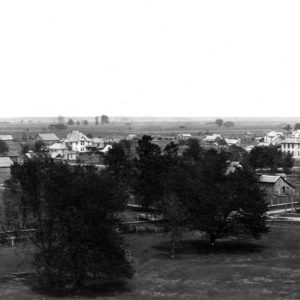 Carlisle
Carlisle  Carlisle Church
Carlisle Church 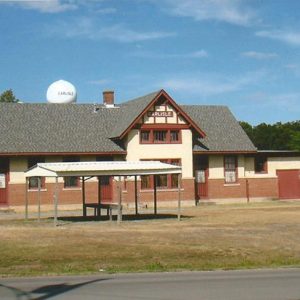 Carlisle Depot
Carlisle Depot 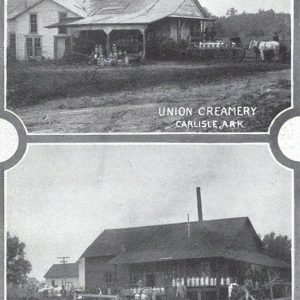 Carlisle Creameries
Carlisle Creameries 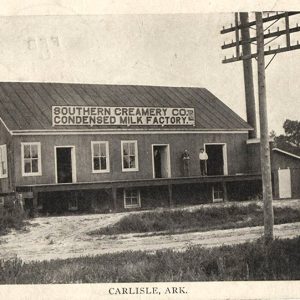 Carlisle Creamery
Carlisle Creamery 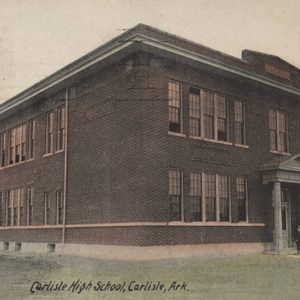 Carlisle High School
Carlisle High School  Carlisle Independent
Carlisle Independent  Carlisle Rice Mill
Carlisle Rice Mill  Carlisle Rice Trucks
Carlisle Rice Trucks 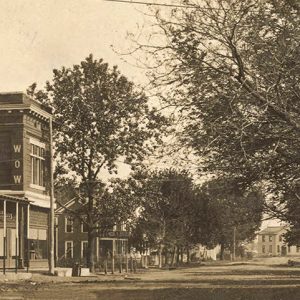 Carlisle Street Scene
Carlisle Street Scene 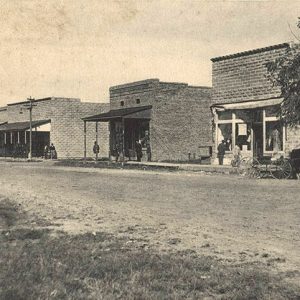 Carlisle Street Scene
Carlisle Street Scene  Carlisle View
Carlisle View 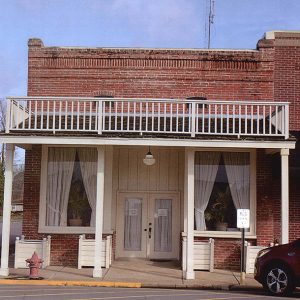 Dairyman's Bank Building
Dairyman's Bank Building  I-40 Dedication
I-40 Dedication 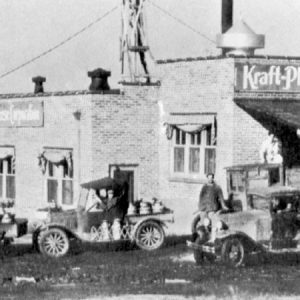 Kraft-Phenix Cheese Factory
Kraft-Phenix Cheese Factory  Lonoke County Map
Lonoke County Map 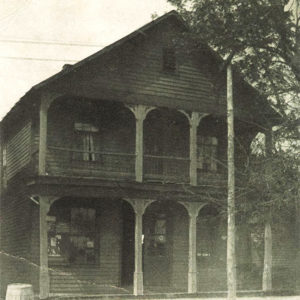 Read House
Read House 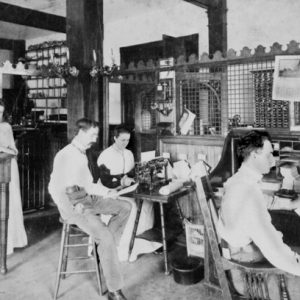 Turrentine Hotel
Turrentine Hotel  Youngblood's Rice Plant
Youngblood's Rice Plant 




Comments
No comments on this entry yet.